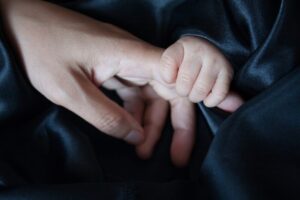Child Care Pulls Women Out of Workforce
The expense or lack of child care is forcing women out of the job market and taking a $122 billion chunk out of the American economy annually.
Studies this month from two separate organizations document the losses brought about by the cost or lack of child care. Not only do women’s wages and careers suffer, but businesses lose revenue and governments miss out on sales and income taxes.
Numbers Look Good
At first blush, the United States seems to be operating at near-peak performance. Unemployment stands at 3.4 percent. That is the lowest in 53 years.
Among women, the number grew from 3.1 percent in December to 3.3 percent in January. Although, that is down from 3.6 percent last year at this time and almost half of the 6 percent mark set in January 2021.
Labor Shortage
However, even with robust job numbers, the U.S. is experiencing a sustained labor shortage.
Employment for men and women is returning to pre-pandemic levels. However, caring for family members has kept more women out of the workforce.
A KKR report issued Thursday finds that American prime age (25-54) women are nine times more likely to stay out of employment to care for a child or parent than men.
“Against this backdrop, current labor force participation rates for women in their prime working years typically lag those of prime-age men by around 10 percent or more,” according to KKR.
That amounts to 7.6 million workers in the U. S.
Billions Lost on Child Care
Earlier this month, ReadyNation published an update to its 2018 study on child care. If found that the lack of child care is a growing economic concern.
The study estimates the loss of income to families, productivity to businesses, and tax revenue to local and federal governments exceeds $122 billion a year. Four years ago, that figure was $57 billion.
Child care even impacts employed parents, according to the study. Related issues reduce productivity or work hours for 85 percent of working parents while 64 percent said they were late for work due to child care problems. Another 58 percent said they missed a day of work in the last three months because they did not have child care.
Out and Staying Out
Only 57 percent of women over 16 are actively looking for work, according to the department of labor’s labor force participation rates.
“We hear every day from our member companies – of every size and industry, across nearly every state – they’re facing unprecedented challenges trying to find enough workers to fill open jobs,” reports the United States Chamber of Commerce. “Right now, the latest data shows that we have over 10 million job openings in the U. S. – but only 5.7 million employable workers.”
A chamber survey revealed that 27 percent of workers said child or elder care obligations prevent them from returning to the workforce.
It’s About the Money
A 2020 study by the Committee for Economic Development of the Conference Board found that income played a role in paying for child care. The average income of families with at least one child under five, who paid for child care was $147,2230. Similar families who did not pay child care averaged an income of $96,037
About 4.5 million working-age people were unemployed last month because they were caring for children who were not in daycare or school, according to the United States Census Bureau. The vast majority of those caregivers were women.

Max K. Erkiletian began writing for newspapers while still in high school. He went on to become an award-winning journalist and co-founder of the print magazine Free Bird. He has written for a wide range of regional and national publications as well as many on-line publications. That has afforded him the opportunity to interview a variety of prominent figures from former Chairman of the Federal Reserve Bank Paul Volker to Blues musicians Muddy Waters and B. B. King. Max lives in Springfield, MO with his wife Karen and their cat – Pudge. He spends as much time as possible with his kids, grandchildren, and great-grandchildren.

Comments